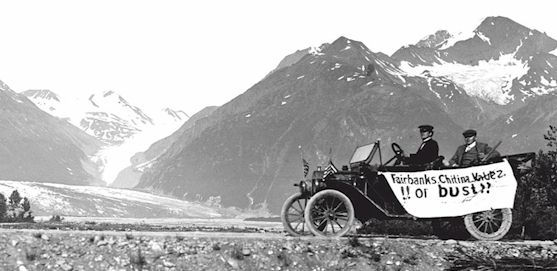This Week in Alaska History: October 6 – October 12
- Alaska Means Business

- Oct 10
- 2 min read
Updated: Oct 15
This Week in Alaska History: October 6 – October 12
This period captures the quirks of calendar shifts, fiery losses, and groundbreaking legal wins—reminders of how Alaska's past blends the absurd with the profound.
October 6, 1869 – The Fort Wrangell post office opened its doors, a small but symbolic step in U.S. administration of the newly acquired territory. Wrangell, a hub for Tlingit trade and early forts, became a key stop on the Inside Passage mail routes.

October 6, 1867 – In a calendrical oddity during the U.S.-Russia handover, Friday the 6th was followed directly by Friday the 18th as Alaska switched from the Julian to Gregorian calendar (skipping 11 days, adjusted for the date line). Residents got an extra "Friday the 13th" vibe without the superstition—two Fridays in a row!
October 7, 1911 – The Ruby Record, a weekly newspaper serving the gold rush boomtown of Ruby on the Yukon River, published its inaugural issue. Amid the feverish mining camps of interior Alaska, this publication—edited by local prospector-turned-journalist J.W. Hill—delivered gritty reports on strikes, claim disputes, and frontier life, helping to chronicle the fleeting prosperity of a town that once boasted 10,000 residents but faded as the easy gold ran out
October 9, 1990 – Anchorage hosted the state's biggest-ever auction: 33,000 tons of gear from the Exxon Valdez oil spill cleanup, sprawling over 50 acres at the fairgrounds. Bidders snapped up booms, skimmers, and protective suits, turning cleanup relics into revenue while closing a chapter on the 1989 disaster.
October 10, 1926 – A blaze razed the eastern half of Douglas Island's community, destroying homes and businesses in a tinder-dry windstorm. Firefighting efforts were hampered by narrow streets and limited water; the rebuild spurred better infrastructure in this Juneau-adjacent hub.
October 11, 1915 – The steamboat Tyconda caught fire at Anchorage's dock, but all 10 aboard escaped unharmed. The vessel, vital for Yukon River trade, was a total loss, highlighting the risks of wood-hulled ships in Alaska's volatile waters.
October 12, 1930 – Tragedy in the skies: Pioneering bush pilot Ralph Wien and two priests, Bernard Keogh and James Joseph, perished when their plane crashed into Shishmaref Inlet near Kotzebue. Wien's death underscored the perils of early Alaska aviation, but his legacy endures in the Ralph Wien Memorial Airport.

.png)



